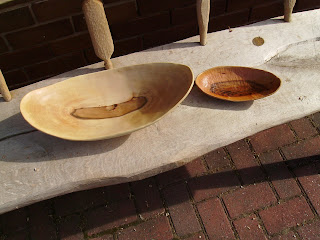This year seems, like last year, to have yielded a bumper crop of Sloes on the Blackthorn bushes here in Yorkshire. Unlike last year though I have harvested some to make my own Sloe Gin. Sloes are like small plums slightly smaller than black grapes that are extremely bitter to taste straight off the vine, as it were, but are used to flavour Gin for a warm winter hip flask filler.

There are many fancy recipes on the
internet for Sloe gin involving the addition of Cloves and other aromatic herbs and spices, but I'm sticking to basic advice from friends who have made Sloe gin for years. I will be adding 1/3 by volume of Sugar, Sloe berries, and cheapo Gin from the local supermarket, Into an air tight container.

It is important to prick the skins of the Sloes before they are added, which is a rather tedious task. The advice is to pick your Sloes after the first frosts, but the ones I picked yielded very easily so I think they are nice and ripe. Once the ingredients have been blended together, the containers should be stored in a warm , dark place such as an airing cupboard. The mixture should be agitated every day for the first week , then once a week there after to mix the sugar. If the Sloe Gin is made now it should be ready for Christmas, when the container contents are strained through muslin before the gin is ready to drink. I am going to make 3 or 4 batches to experiment with sweetness
ie:- sugar volumes. I'm sure none of it will be wasted because my son starts university next month!!
I'll blog more soon about other uses for Blackthorn,
 I am interested in texture in my woodworking so took the opportunity to experiment with Knives, an Adze and Gouges whilst smoothing out the surface. Working at dusk on a nice sunny evening is great with the low light for showing up any imperfections.
I am interested in texture in my woodworking so took the opportunity to experiment with Knives, an Adze and Gouges whilst smoothing out the surface. Working at dusk on a nice sunny evening is great with the low light for showing up any imperfections. Next job is to source some suitable material for the legs. Again I will be using either Oak or Chestnut for durability. The leg tenons will be 1 1/2". There are many patterns of shavehorse, dependant on the primary function it will be put to. I intend to make something similar to this one I used recently on a course with Owen Jones- the cumbrian Swill maker
Next job is to source some suitable material for the legs. Again I will be using either Oak or Chestnut for durability. The leg tenons will be 1 1/2". There are many patterns of shavehorse, dependant on the primary function it will be put to. I intend to make something similar to this one I used recently on a course with Owen Jones- the cumbrian Swill maker










